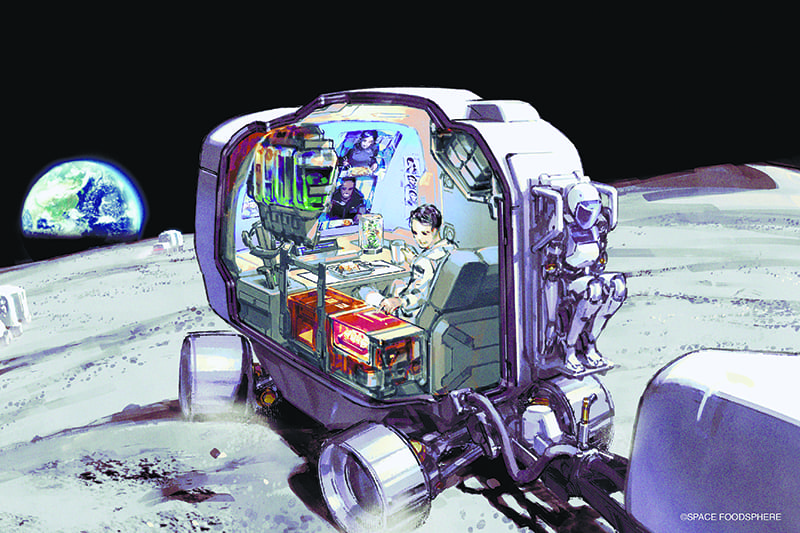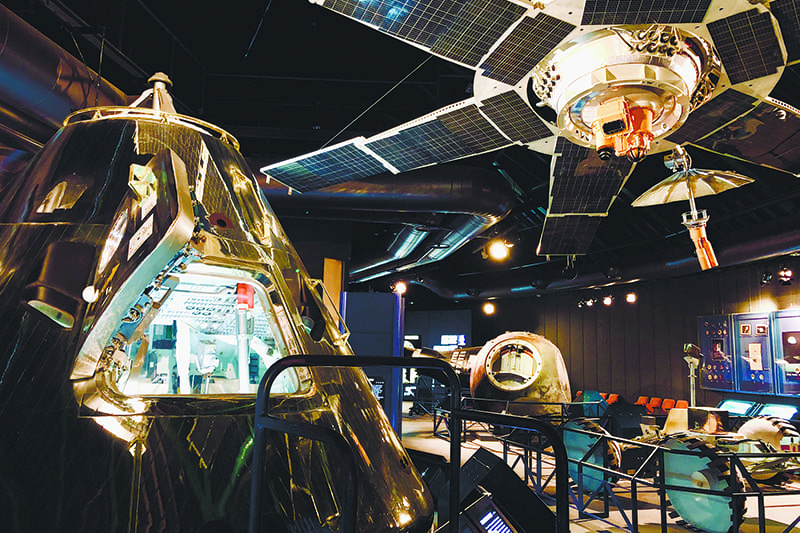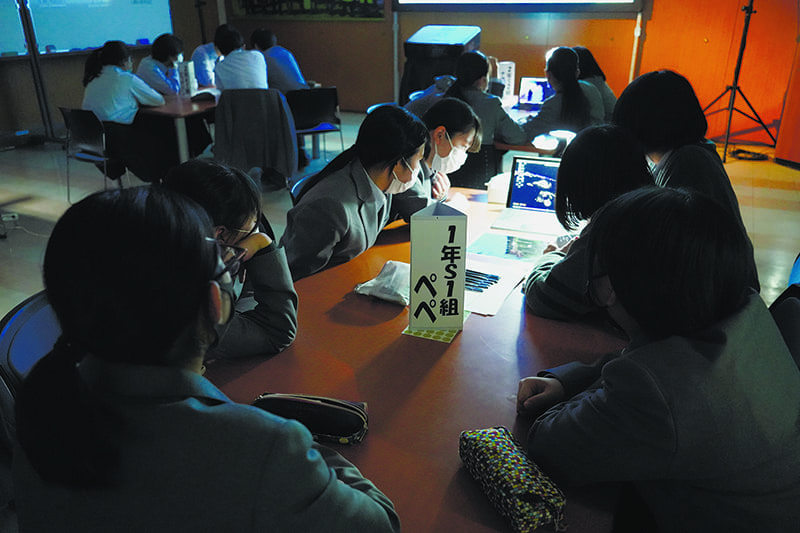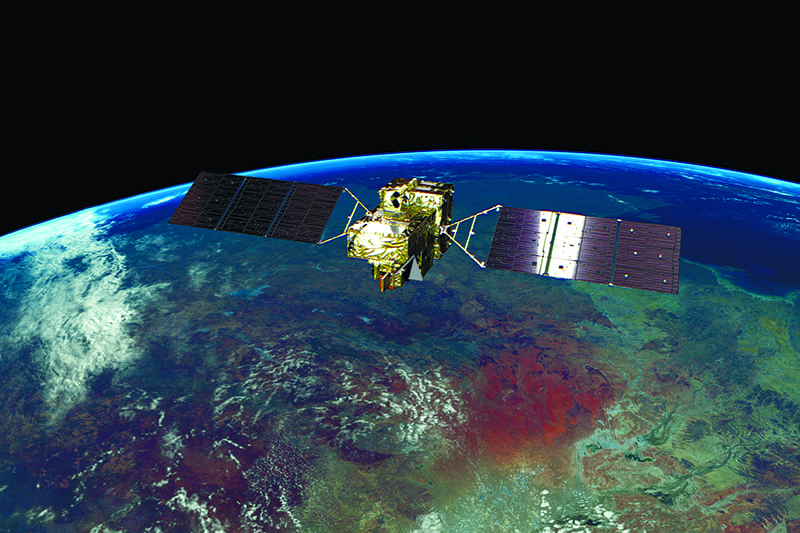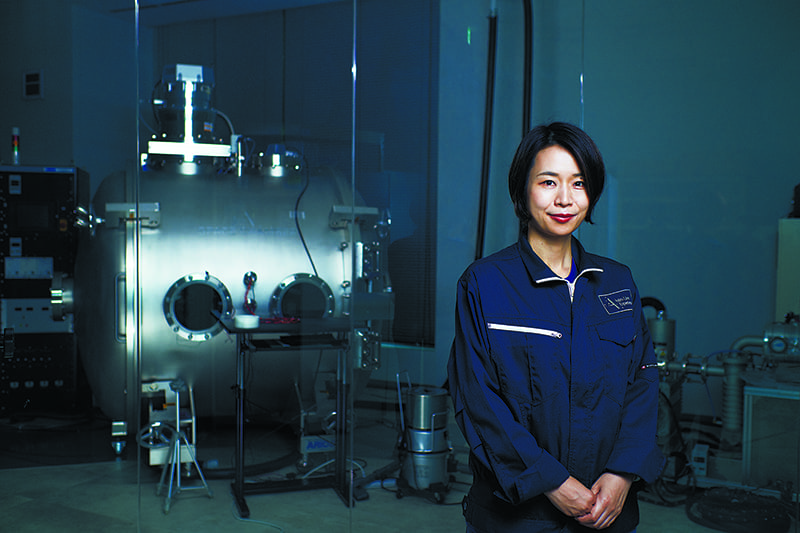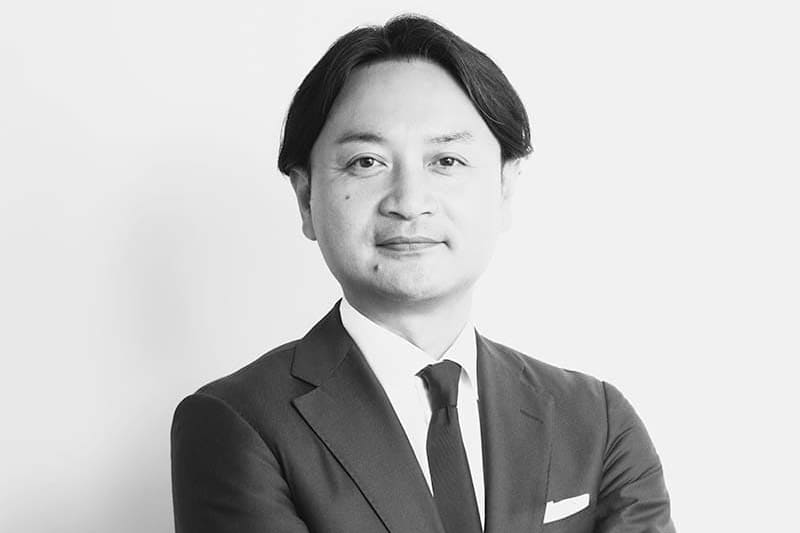January 28, 2022
How Japan became the world’s second-largest investor in space ventures
HISTORY
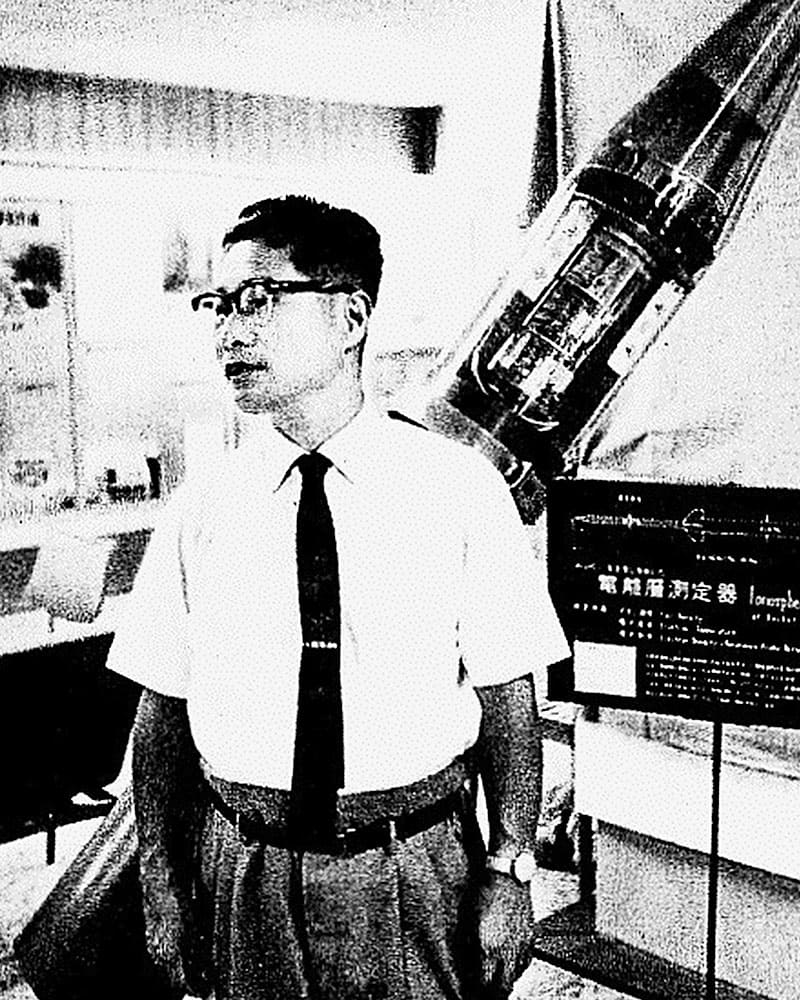
Hideo Itokawa
Starting with pencil rockets, Hideo Itokawa (1912-1999) pioneered rocket development in Japan and became known as the country’s “father of space development.”
On Dec. 23, Japan’s H-IIA Launch Vehicle No. 45 was launched from the Tanegashima Space Center in Kagoshima Prefecture carrying a British communications satellite. Out of its 45 launches to date, the H-IIA, which was developed by JAXA and Mitsubishi Heavy Industries, has succeeded 44 times, giving it a success rate of 98%, one of the highest in the world.
Last year was also the year in which space tourism became a reality. Beginning in July, three American space startups launched spacecraft carrying private customers in quick succession. Then, in December, Yusaku Maezawa, the founder of the Japanese fashion e-commerce site Zozo, made a trip to the International Space Station on the Russian spacecraft Soyuz — and attracted much media attention.
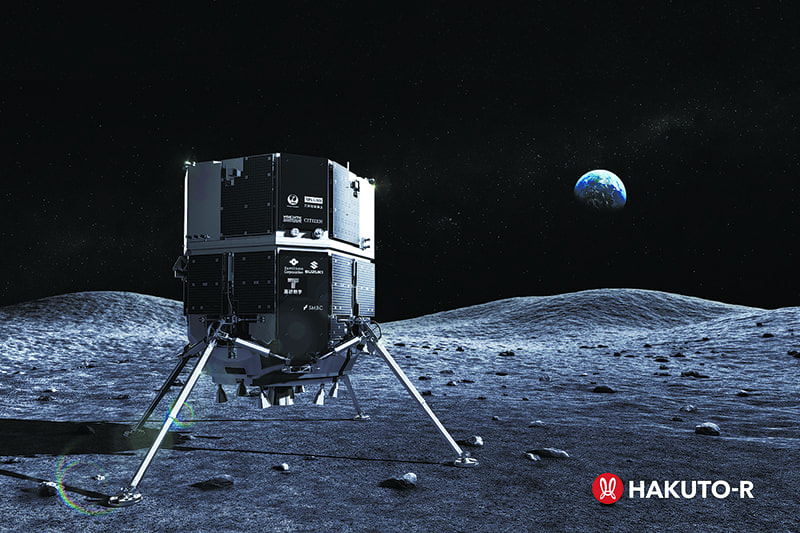
Japan’s recent activities are based on many decades of work by researchers. It all started in 1954, when Hideo Itokawa, the “father of Japanese space development,” brought together researchers in electronics and flight mechanics in the newly formed center for rocket development at the University of Tokyo. Itokawa, who had been involved in airplane development before the war, became interested in spaceflight during his stay in the United States after the war, and was the first person to conduct rocket research in Japan. In 1955, Itokawa’s team, which had only a small budget, began conducting experimental launches of pencil-type rockets with a total length of about 23 centimeters. In 1958, he expanded his focus to atmospheric observation with the larger Kappa 6 rocket, which was launched to the target altitude of 60 kilometers. The period from 1957 to 1958 happened to coincide with International Geophysical Year, an international project that saw scientists from all over the world cooperate on space observation, and Japan was invited to participate for the first time on the basis of the data it had captured with Kappa 6. This marked the moment when Japan joined the ranks of countries conducting space development.
Itokawa and his colleagues, who threw themselves into a wide range of endeavors, began developing satellites in 1962. In 1966, they began launching the Lambda carrier rockets, for satellite delivery, in spite of budgetary and environmental limitations. However, the launches failed four times, resulting in repeated negative media coverage. In 1970, three years after Itokawa retired from the University of Tokyo, Japan succeeded in launching its first satellite, Osumi. For the first time, the country operated its own satellite in orbit. After that, the achievements of Itokawa, the nation’s leading space pioneer, were passed on to the National Space Development Agency of Japan (NASDA) and then the current Japan Aerospace Exploration Agency (JAXA).
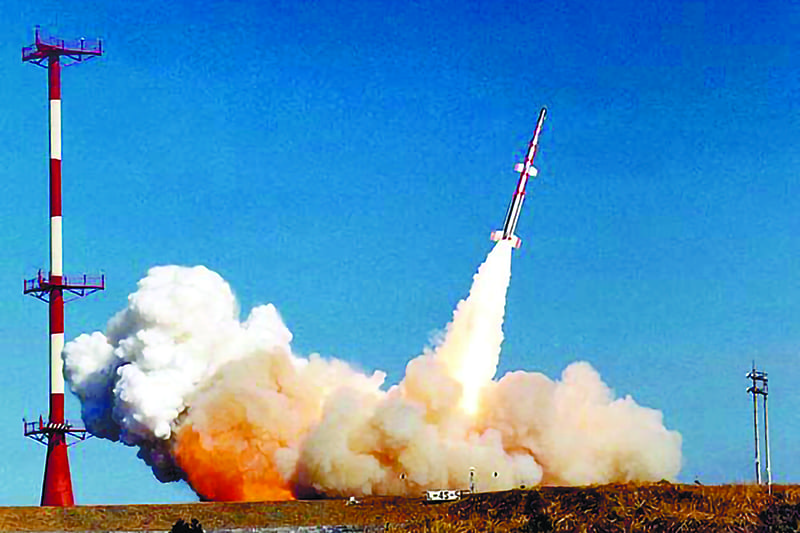
Japan’s first satellite,
Osumi
Japan’s first satellite, Osumi, was launched in 1970 on a Lambda rocket. Equipped with sounding devices, its main purpose was to test technologies for putting satellites in orbit with the next-generation Mu rockets. | © JAXA
In 2003, the same year that Osumi was retired after 30 years of service, JAXA’s asteroid explorer Hayabusa was launched in the first attempt ever to send a spacecraft to a celestial body other than the moon and then bring it back to Earth. Its target asteroid was named Itokawa in Hideo Itokawa’s honor. For a short time the spacecraft lost communication with Earth and the mission looked in peril, but in 2010 it began its return voyage complete with a collected sample, and the project garnered many supporters. On the day of its arrival back on Earth, June 13, the live online broadcast of its entry into the atmosphere totaled more than 1 million views, and the news filled Japanese newspapers the following day. Three films eventually were made about the Hayabusa mission, and related goods became sudden hits. Hayabusa remains popular to this day, and it stands as a symbol of Japan’s space development.
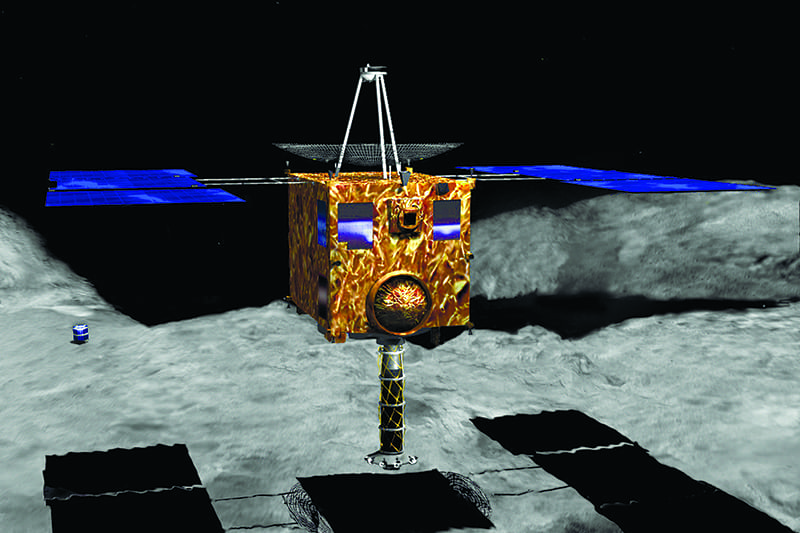
Hayabusa
The asteroid explorer Hayabusa, which was launched in 2003. In 2005, it collected samples from the asteroid Itokawa and then later delivered them to Earth, the first time samples of a celestial body outside of the Earth’s gravitational sphere were collected.
Now, more than a decade since Hayabusa’s return, space development is no longer the exclusive domain of JAXA and heavy industry. Growth of the private space sector, which started in the early 2000s in the United States, accelerated rapidly in the 2010s, including through prominent companies like Elon Musk’s Space X. The Japanese government formulated its New Space Basic Plan in 2015 and set a goal of increasing the domestic space industry to a cumulative value of ¥10 trillion ($90 billion) within a decade. In addition, when the Space Activity Act, concerning the launch and management of satellites, and the Satellite Remote Sensing Act, on the use of satellite data, were passed by the Diet in 2016, a slew of new private companies emerged. As a result, whereas in the mid-2010s Japan had just 10 or so private space venture companies, there are now more than 60, and some say the country ranks second in the world for the total amount invested in space businesses.
“In Japan right now, space ventures with world-class technology are appearing rapidly,” explained Mizuki Komasa, who has long supported investment in space ventures through his venture capital fund, Real Tech Fund, and serves as the representative of Space Foodsphere. “For example, Ispace, which is now working on the private-sector lunar exploration program Hakuto-R, is a pioneer in the field of small moon lander technology among Japanese companies. Meanwhile, Astroscale was the first company in the world to develop technology specializing in the removal of space debris.” The quality of their respective technologies is evidenced in Ispace having raised a cumulative total of about ¥21.8 billion in funding, and Astroscale ¥33.4 billion.
“It’s essential that these space businesses be connected to the sustainability of the Earth and humankind,” Komasa said. Both companies contribute to the sustainability of the entire space business. Ispace’s goal is the creation of a sustainable economic zone that brings the moon and Earth together as a single ecosystem in which the moon’s water resources can be utilized. Meanwhile, Astroscale plans to remove hundreds of millions of pieces of orbiting debris. In addition, Synspective, which works on small-satellite development and data analysis, analyzes satellite data such as ground movements and flood damage from disasters, and also captures and analyzes complex geographical information to contribute to the achievement of carbon neutrality. Advanced technology and Earth observation from space will be indispensable for the survival of the Earth and humankind. In this special feature, we introduce the current state of Japan’s space business.
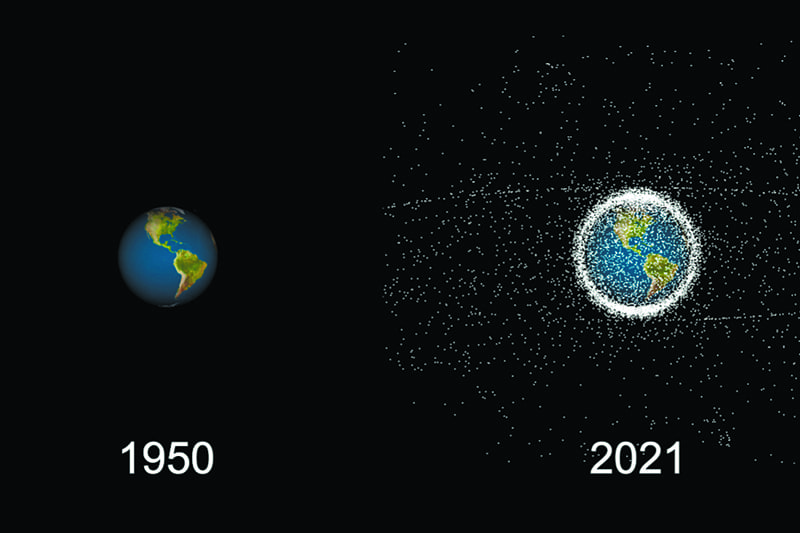
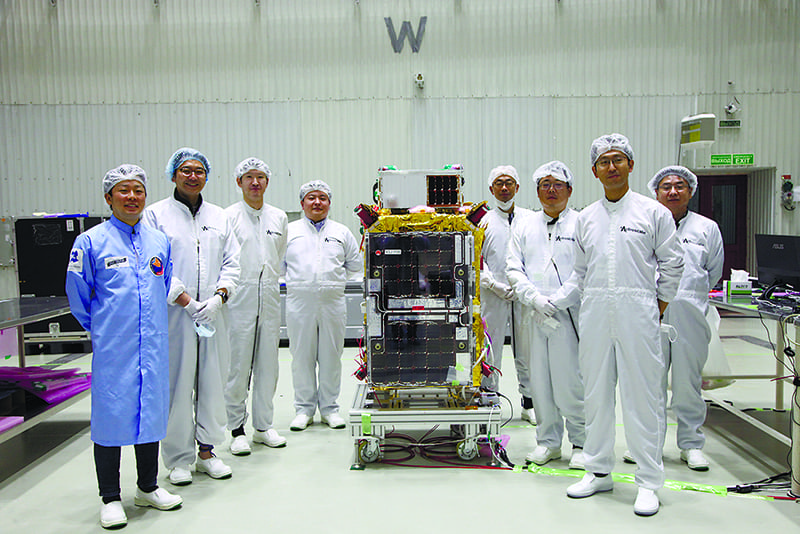
2021
ELSA-D
A visual representation of space debris that is accumulating around the Earth. Compared with 1950, there was countless debris in 2021. | © ASTROSCALE
日本の宇宙開発の歴史。ロケット~宇宙ベンチャーまで。
2021年12月23日、H2Aロケット45号機が鹿児島県の種子島宇宙センターから打ち上げられた。JAXAと三菱重工が開発するH2Aロケットは世界でも最高水準の成功率98%を誇っている。
躍進を続ける日本の宇宙開発だが、現在に至るまでには長き歴史があった。1954年、東京大学の糸川英夫が先陣を切って日本のロケット開発がスタート。1970年、日本初の人工衛星「おおすみ」が打ち上げに成功。2003年に打ち上げられたJAXAの小惑星探査機「はやぶさ」は、世界初となる月以外の天体からのサンプリ採取と地球帰還に成功し、日本の宇宙開発のシンボルとなった。
日本政府が2015年に策定した「新宇宙基本計画」は、さまざまな民間企業が宇宙開発に関わるきっかけをつくった。日本の宇宙ベンチャー企業も現在は60社を超え、投資額も世界二位に迫る勢いに。宇宙ゴミの除去や月面探査を目指す小型衛星開発などのベンチャーへの注目は厚く、宇宙視点の技術は、これからの地球や人類のサスティナビリティにも広く貢献していくことだろう。
Return to Sustainable Japan Magazine Vol. 8 article list page

